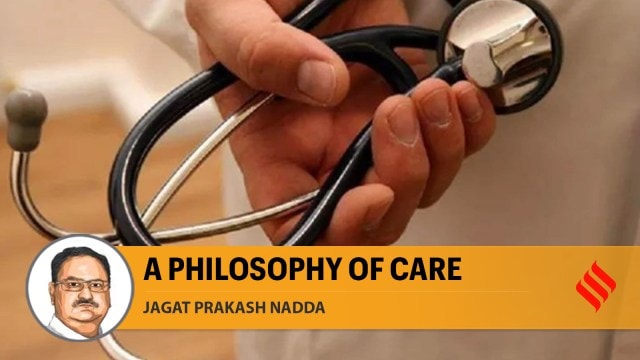
India’s healthcare system has undergone a remarkable transformation over the last 11 years, driven by political will, enhanced funding, and a commitment to providing affordable, accessible, equitable and quality healthcare for all. It reflects the Modi government’s focus on building a robust healthcare system, prioritising the well-being of every citizen.
In 2014, India faced significant challenges, including gaps in infrastructure, trained human resources, availability of medicines and diagnostics, and service quality. Today, guided by a philosophy of comprehensive care focused on proactive well-being, there has been a dramatic shift. The National Health Mission (NHM) is the cornerstone of this revolution, strengthening health systems, reducing maternal and child mortality, combating diseases, and promoting universal access to quality healthcare. More than 1.77 lakh Ayushman Arogya Mandirs are bringing healthcare closer to communities, and platforms like eSanjeevani and TeleMANAS have democratised access to specialist care.
Focused interventions under NHM have led to improvements in maternal and child health indicators. According to the UN Maternal Mortality Estimation Inter-Agency Group report, India has seen an 86 per cent decline in maternal mortality rate, nearly double the global average decline of 48 per cent. Infant mortality has declined by 73 per cent as against a global decline of 58 per cent.
As the burden of non-communicable diseases is increasing, preventive care has also been a focus. Screening for oral, breast and cervical cancers is being provided at Ayushman Arogya Mandirs. By May, nearly 28 crore were screened for hypertension, more than 27 crore for diabetes, and 27 crore for oral cancer.
The Universal Immunisation Programme continues to be strengthened. Six new vaccines have been introduced since 2014, with 5.46 crore children and 1.32 crore pregnant women vaccinated under Mission Indradhanush. We have leveraged the latest technology to build the U-WIN portal to digitise vaccination services, recording 10.68 crore beneficiaries and administering 42.75 crore doses by May 2025.
India was declared polio-free in 2014, eliminated maternal and neonatal tetanus in 2015, and trachoma in 2024. Malaria cases and deaths dropped by over 80 per cent between 2015-2023. We reached the Kala Azar elimination target in 2023. TB incidence has reduced by 17.7 per cent and mortality by 21 per cent, as confirmed by the WHO Global TB Report 2024, the “missing” TB cases have dropped from 15 lakh in 2015 to 1.2 lakh in 2024.
Healthcare financing has also improved. Government health expenditure as a share of GDP has increased from 1.13 per cent to 1.84 per cent (2014-2022), while Out-of-Pocket Expenditure (OOPE) dropped from 62.6 per cent to 39.4 per cent. The Free Drugs and Diagnostics Service Initiative has enhanced affordability and accessibility, with laboratory services available in 36 States/UTs, CT scans in 34 States, and tele-radiology in 12 States/UTs. The Pradhan Mantri National Dialysis Programme has benefitted more than 28 lakh patients, saving Rs. 8,725 crores in OOPE. Emergency response systems like the National Ambulance Services (NAS) and Mobile Medical Units (MMUs) have extended services to remote areas.
The Pradhan Mantri Ayushman Bharat Health Infrastructure Mission (PM-ABHIM) was launched in 2021. Key initiatives include the establishment of 18,802 Ayushman Arogya Mandirs, 602 Critical Care Hospital Blocks, and 730 District Integrated Public Health Labs. The NHM has engaged 5.23 lakh additional health workers, including 1.18 lakh Community Health Officers (CHOs). Introduced in 2018, the CHO cadre bridges the gap between community-level health workers and medical officers.
The last 11 years have laid a foundation for universal healthcare. The nation is poised to achieve its vision of accessible, affordable, and equitable healthcare for all.
The writer is Union Minister for Health & Family Welfare